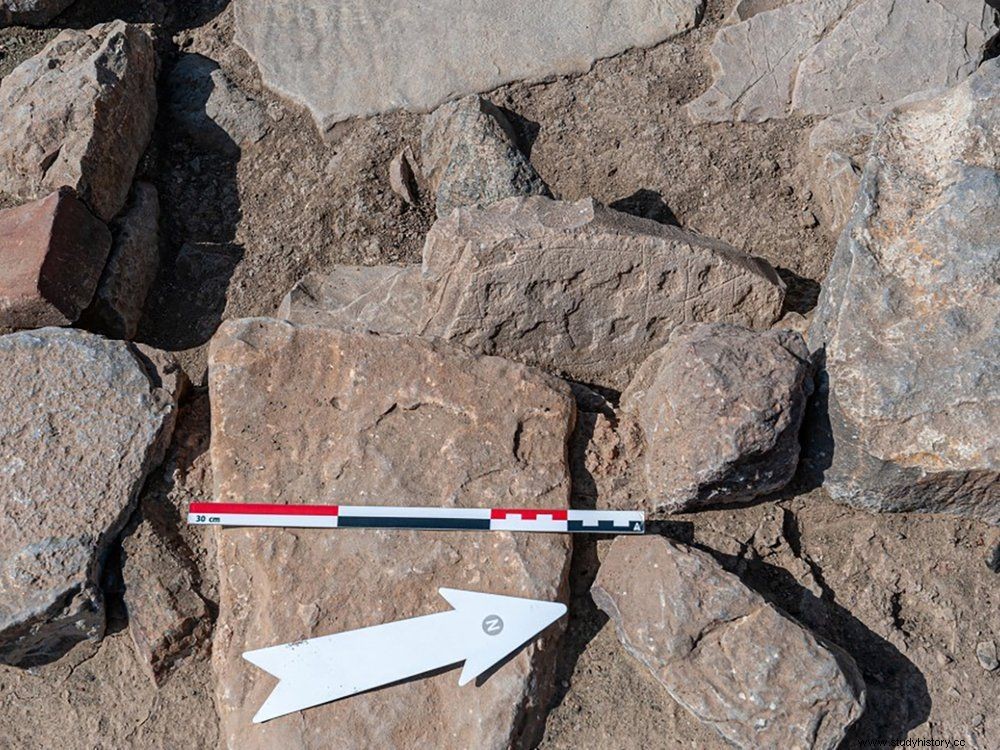Buried in the remains of a Bronze Age village, itself located in the desert of Oman, an enigmatic board game engraved on a stone has delighted archaeologists.

About 4,000 years old, the game, engraved on a block of stone, has 13 squares in the center of which is a notch.
There are archaeological discoveries that remind us more than others that certain human practices have hardly changed over the millennia. This is the case of the board game, which we know has occupied a prominent place in daily life since Antiquity. The ancient Egyptians were fond of it, many examples of games having come down to us (they are called mehen , senet or the game of dogs and jackals). The royal game of Ur or game of twenty squares, found in a royal tomb in the Mesopotamian city in 1920, is also considered to be one of the oldest - and most sumptuous - boards inventoried to date. Man has therefore always been a player, and we have early proof of this.
A 4,000 year old pastime
A new copy of these ancestral games has just been unearthed near the village of Ayn Bani Saidah, in the Qumayrah Valley, a desert region of Oman so far little studied by specialists. Consisting of a grid engraved on a large stone, the tray was found in the remains of a Bronze Age city, excavated until last December by the University of Warsaw and the Ministry of Heritage and Tourism of Warsaw. 'Oman. Comprised of 13 squares, each with some sort of central notch or indentation, the game was buried in the remains of a piece. According to archaeologists, it probably entertained its creators some 4,000 years ago. "The board is made of stone and has marked fields and holes for cups. Games based on similar principles were played in the Bronze Age in many economic and cultural centers of that time" , they said in a statement.

The Royal Game of Ur, kept in the British Museum. Credits:Wikimedia Commons.
Now it's up to archaeologists to figure out the rules, which may not be an easy task. It took more than 50 years of investigation by specialists at the British Museum to succeed in translating the rules of the royal game of Ur, which were finally discovered in cuneiform writing on terracotta tablets more than 2,000 years old. This limited two-player game, whose closest modern equivalent would be backgammon, involved rolling dice and racing checkers on a small H-shaped board. Some players bet rounds of booze or women, when others saw the outcome of the game as a good or a bad omen.
Towers with an indeterminate function
The game board is not the only notable discovery made by the team of Piotr Bieliński, from the Polish Center for Mediterranean Archeology at the University of Warsaw (PCMA UW) and Sultan al-Bakri, Director General of Antiquities at the Ministry of Heritage and Tourism (MHT) of the Sultanate of Oman. The remains of at least four towers - three round and one angular - have also been excavated. One of them, despite its more than twenty meters in diameter, was not visible on the surface. "The function of these prominent structures found at many sites attributed to the so-called Umm an-Nar culture has yet to be explained" , said Agnieszka Pieńkowska, also an archaeologist at PCMA UW.
Researchers have also found evidence of copper working at the site, as well as copper artefacts. "This shows that the colony participated in the lucrative copper trade for which Oman was famous at that time, which is mentioned in the cuneiform texts of Mesopotamia" , assures Piotr Bieliński. The site is said to have been occupied until the Iron Age II (1100-600 BCE).
